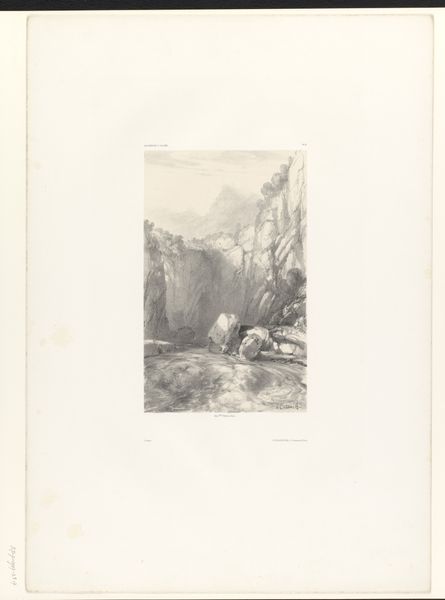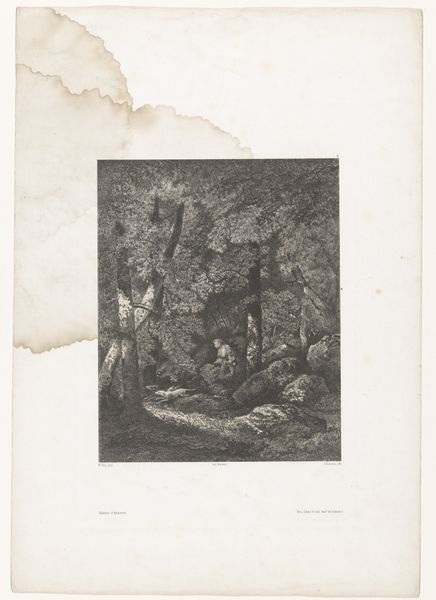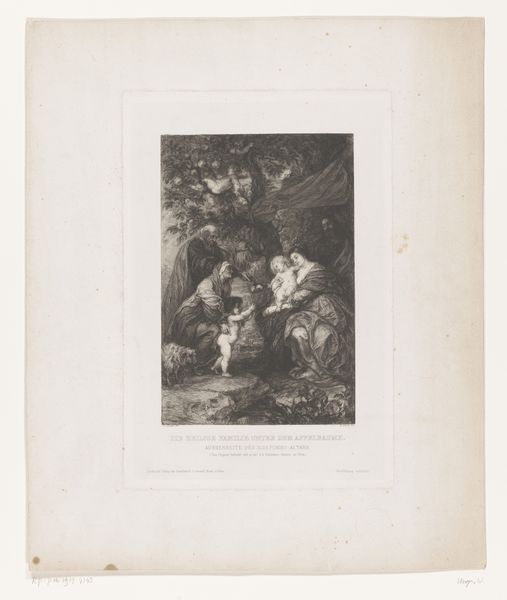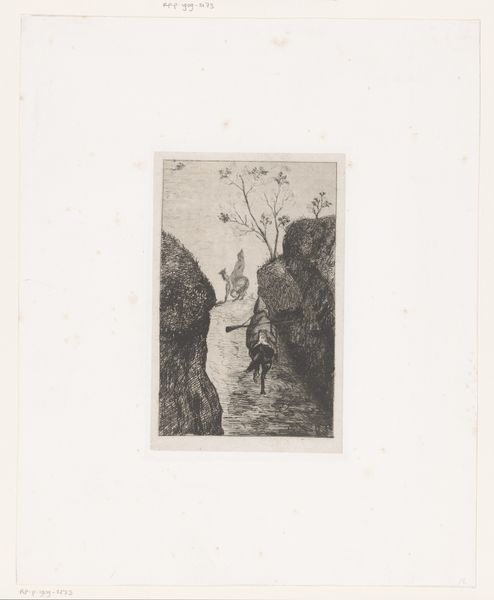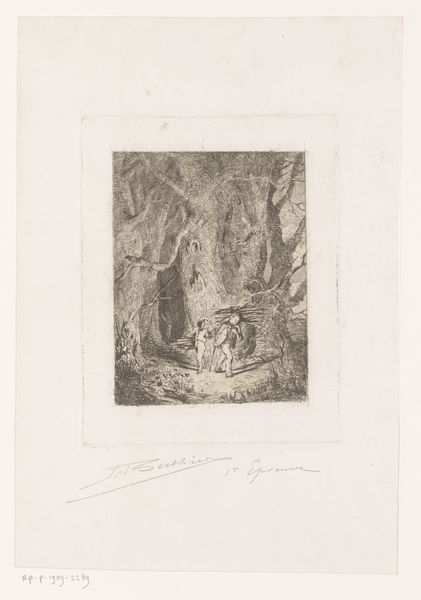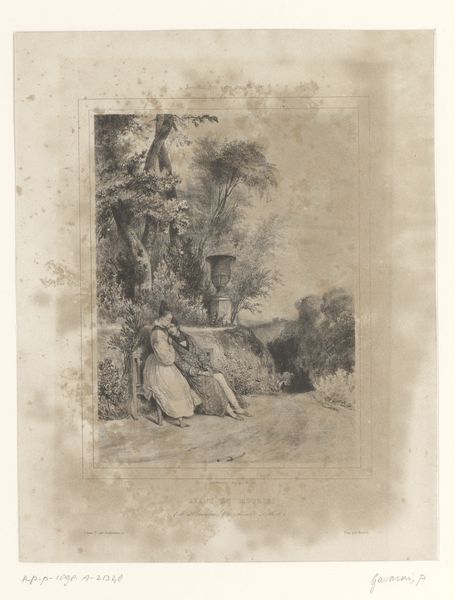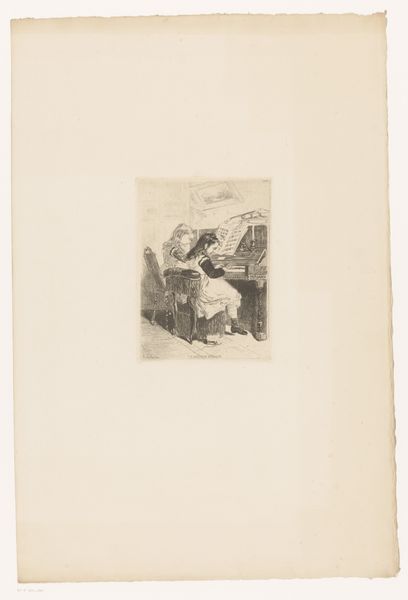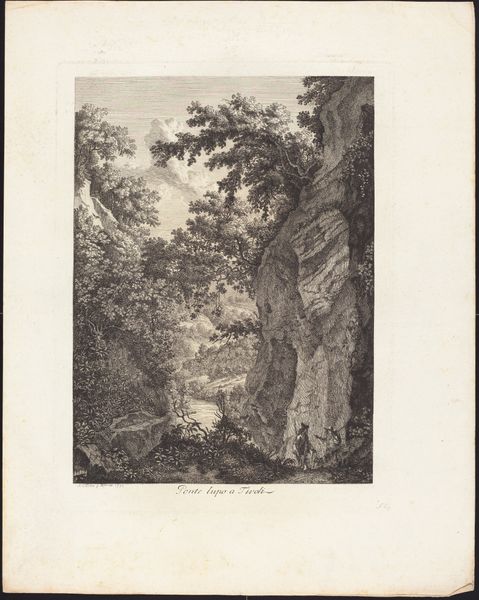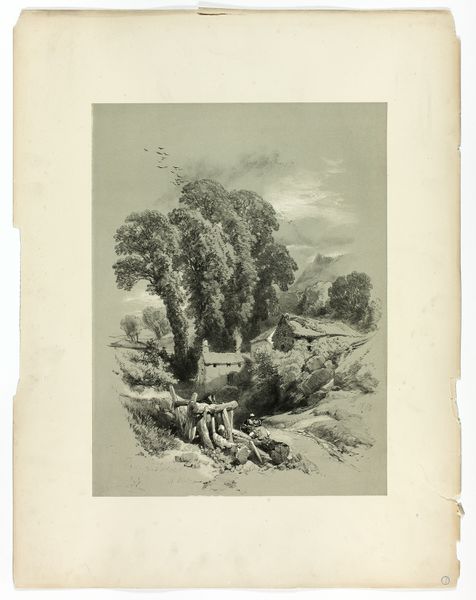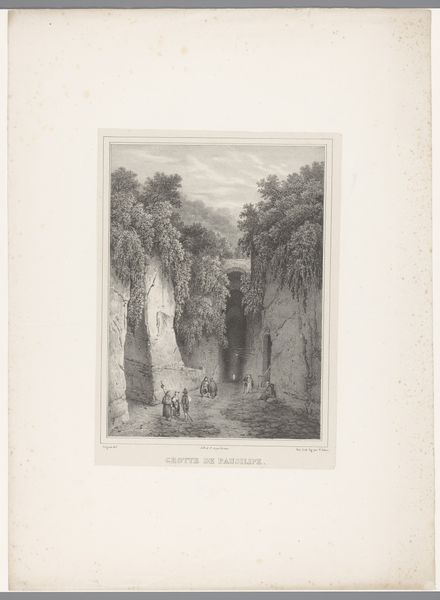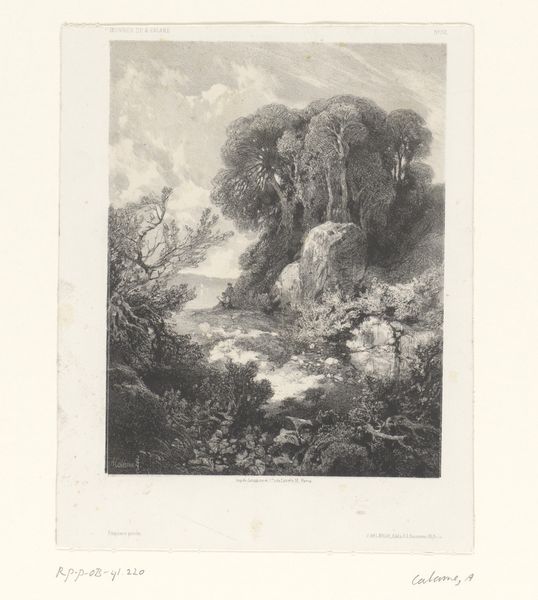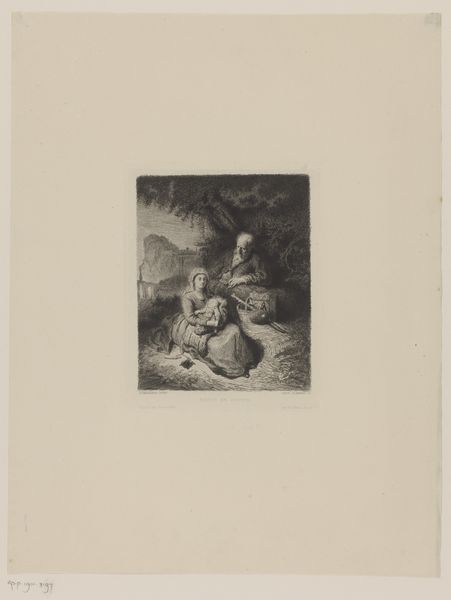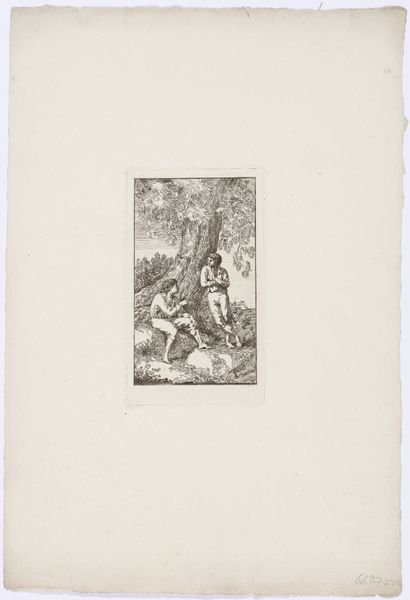
Rovers in een hinderlaag in de buurt van het klooster van San Cosimato 1824 - 1826
0:00
0:00
print, engraving
# print
#
landscape
#
figuration
#
romanticism
#
history-painting
#
engraving
#
watercolor
Dimensions: height 557 mm, width 417 mm
Copyright: Rijks Museum: Open Domain
Editor: This engraving by Alexis-Victor Joly, titled "Rovers in een hinderlaag in de buurt van het klooster van San Cosimato," dates from somewhere between 1824 and 1826. The steep staircase makes me feel a bit uneasy. I wonder what lies in store for those travellers up ahead. What's your read on this image? Curator: I see a Romantic interpretation of history. These images, especially prints, played a vital role in disseminating narratives and solidifying national identities. Look at the emphasis on the dramatic landscape – it’s not just scenery; it's an active participant in this historical event. Editor: Active in what way? It just looks like some really inconvenient stairs. Curator: Inconvenient, perhaps, but also formidable. The print invites us to contemplate not only the event itself but also its geographical setting and cultural resonance. Think about the broader context of Romanticism's interest in sublime nature and how that intertwines with the glorification of a potentially fictional, daring past. Joly is, I think, selling us a carefully curated version of history. Does the term “rovers” conjure up notions of valiant resistance fighters, or something more menacing? Editor: I guess it could be either. It certainly complicates the story more than I first realized. Curator: Indeed. And consider where this image would have been displayed and consumed. The act of printing and circulating this artwork reinforced a specific political and social view, influencing its audience's understanding of history. Editor: So it's not just art for art's sake. It's designed to shape opinions and potentially incite emotion? Curator: Precisely. Understanding that shifts our perspective. Now we can view the "Rovers" not merely as figures in a landscape but as instruments within a much larger narrative, a political narrative carefully constructed through art and distributed to the masses. Editor: This makes me think differently about art. It shows me it is rarely a neutral object. Curator: Exactly, and by being aware of that, we can begin to interpret artwork from new perspectives and ask different questions.
Comments
No comments
Be the first to comment and join the conversation on the ultimate creative platform.
